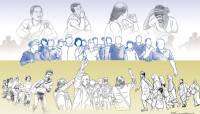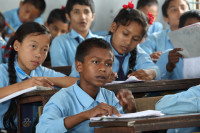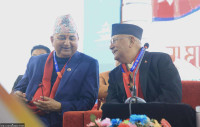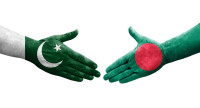Opinion
A new trajectory
The tourism industry should be shaken up to attract new ideas and quality visitors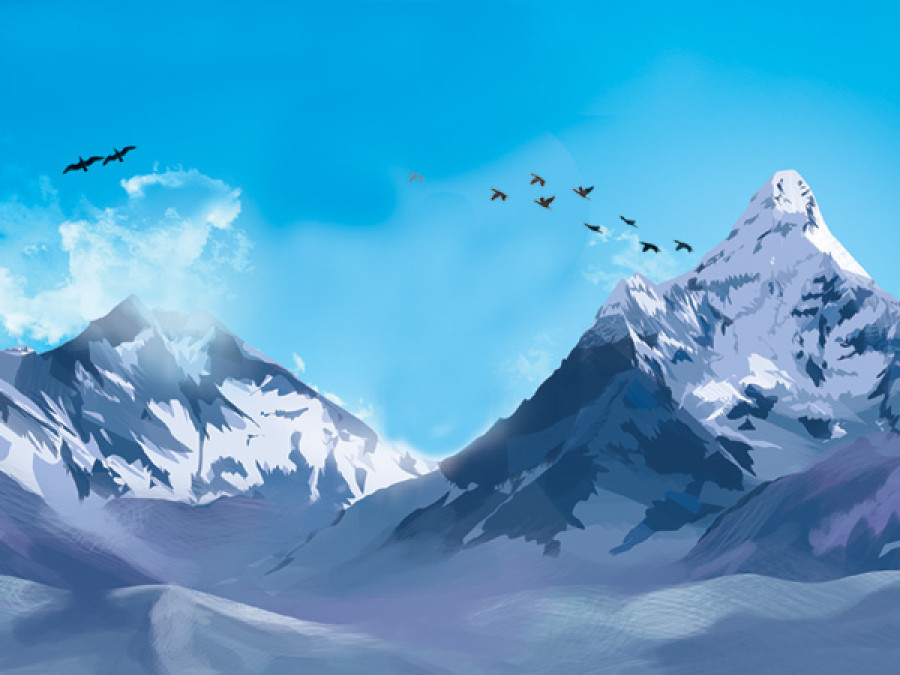
It would be plain difficult to realise the country’s development goals at this pace of policy formulation and constitution implementation. So it is imperative to evoke Nelson Mandela’s quote “It’s always impossible until its done” to trigger a pro-active attitude in the minds of executives who are called leaders in Nepal. Prominent sectors of the economy like tourism and hydropower are progressing at a snail’s pace despite their massive potential being constantly highlighted. Declining reserves of skilled human resource, lacklustre promotional efforts, improper marketing strategies and misapplication of financial resources are causing trade to dip.
The target of reaching one million tourist arrivals remains a pipedream. Blaming the devastating earthquake and border blockade will not help to boost the industry. Victims in urban areas have almost forgotten the disaster, but the government has been using the tremor and blockade to hide its inefficiency in multiple realms. In order to bring a minimum impact on the future, present efforts have to be strengthened. Nepal’s popular triangular destinations, namely Kathmandu, Chitwan and Pokhara, are languishing with their own bottlenecks in multiple realms of infrastructure and other deficiencies. Chitwan, once a paradise destination for wildlife reserve and conservation, has turned into a ghost village due to the protracted road construction project there.
Following the earthquake and blockade, people in the region had the expectation that the situation would turn conducive once things settled down. However, the lacklustre performance of the government in executing the vital link road from Mugling to Narayanghat and surrounding areas has squandered the heavy pool of opportunities of those regions. State-of-the-art jungle resorts and villas have been established, but their worth might be proven later, if they survive till then. In order to boost demand in this destination again, the government has to allow erstwhile seasoned operators to operate inside the jungle with renewed stricter norms and stipulations.
Another unfortunate situation apparent in the service industry is the poor state of the human resource pool. This scribe himself witnessed amateur delivery across the tourism industry in and around these triangular destinations. If the situation prolongs for a few more years, Nepal’s image will certainly be transformed into that of a backpacker destination. In no case can we impose levies and fix benchmark prices like in Bhutan in order to elevate the destination’s image if proper planning is not done now. Prolonged illness in the economy will rather inject a fear of intra-industry competition which is happening now, and these are fatal measures for long-term sustainability.
No more hippies
Another good way of getting rid of the image of a low-value destination is discouraging no-frills (budget) airlines. They have very low overheads compared to full-service carriers. So their only marketing thrust will be luring the thriftiest passengers, which in no way helps our aim of attracting quality tourists. If policymakers let this situation continue further, star hotels will soon start degrading to non-star ones. With the great emphasis on connectivity among member states of various regional forums and Nepal’s wish to remain a bridge between the two economic powerhouses in the north and the south, the country will soon be filled with hordes of backpackers. The ‘connectivity’ syndrome in the long run will pressurise big players to adjust to renewed demand, and unanticipated competition will be another challenge as has been seen in Europe and Asean countries.
Since there is no filtration mechanism to ensure that the country receives only quality tourists, the goal has always been quantity as opposed to quality. The time has come for Nepal to adopt an open sky policy instead of sticking to a liberal sky policy to protect the national flag carrier’s interest. Quality is certainly not assured by the expansion of an airline’s fleet or flight frequency. It is managerial acumen, art and value-filled measures which matter most. But these things enter the government’s mind-gates very late. Until and unless new laws for operating modern airlines are enacted, it is a taxing job for the state to run an airline. Thus, if the skies are opened to all, regional airports like Pokhara and Bhairahawa will be operating at full capacity. They will attract more airlines, make more air seats available and enhance frequencies, connectivity and movement of passengers. With federalism on the cards, this will foster regional development and balanced tourist flow.
Returning to a place
Arrival figures show that Indian visitors occupy the number one spot followed by Chinese, Americans and Europeans. The composition of tourists has turned topsy-turvy from the time we concluded Nepal Tourism Year 2011. This and all other campaigns launched so far have focused on visitor numbers. No heed has been paid to quality. Thus, it is of utmost importance to devise ways to prevent a repeat of the hippie days in tourism.
If Nepal really wants to usher in a new era of tourism, it has to abandon its policies of conventionalism except in the form of hospitality delivery. Conventionalism does not hold significance in the era of digitisation, Facebook and greater thrust for connectivity. Since there is always a dearth of resources to promote Nepal in the tourism source markets, word-of-mouth marketing would be an easy and cheap way for a country like ours. Hence, creating schemes to attract new visitors and encourage old ones to come again would be another idea for enhancing tourist numbers. After all, repeat visitors account for almost one-third of total arrivals. Nelson Mandela’s saying seems to be a pertinent way to conclude: “There is nothing like returning to a place that remains unchanged to find the ways in which you yourself have altered.”
Baral is a consultant associated with the Tourism Industry




 10.12°C Kathmandu
10.12°C Kathmandu
